Get 10 Free Proxies For Shadowsocks
Shadowsocks is an open-source proxying tool designed to bypass internet censorship and enhance privacy. Unlike traditional VPNs, Shadowsocks operates as a secure SOCKS5 proxy, which makes it a lightweight yet powerful option for accessing restricted content and safeguarding your browsing activity. Its flexibility, high-speed performance, and ability to work around deep packet inspection (DPI) make it popular among users who need more control over their connection.
How to set up a proxy in Shadowsocks on Android
Setting up a proxy in Shadowsocks on Android is straightforward and can be done in just a few simple steps. Follow the steps below to configure your proxy and enhance your online privacy.
Install and launch Shadowsocks on your Android device
To begin, you need to download and install the Shadowsocks app from the Google Play Store.
- Open the Google Play Store on your Android device.
- Search for Shadowsocks in the search bar.
- Select the official Shadowsocks app and tap Install.
- Once the installation is complete, open the app by tapping Open.

With the app now running, you're ready to proceed with the configuration.
Access Shadowsocks settings
Once Shadowsocks is launched, you’ll need to configure a proxy server by accessing the app’s settings.
- Tap on the pencil icon located at the top-right corner of the app’s main page to access the server settings.
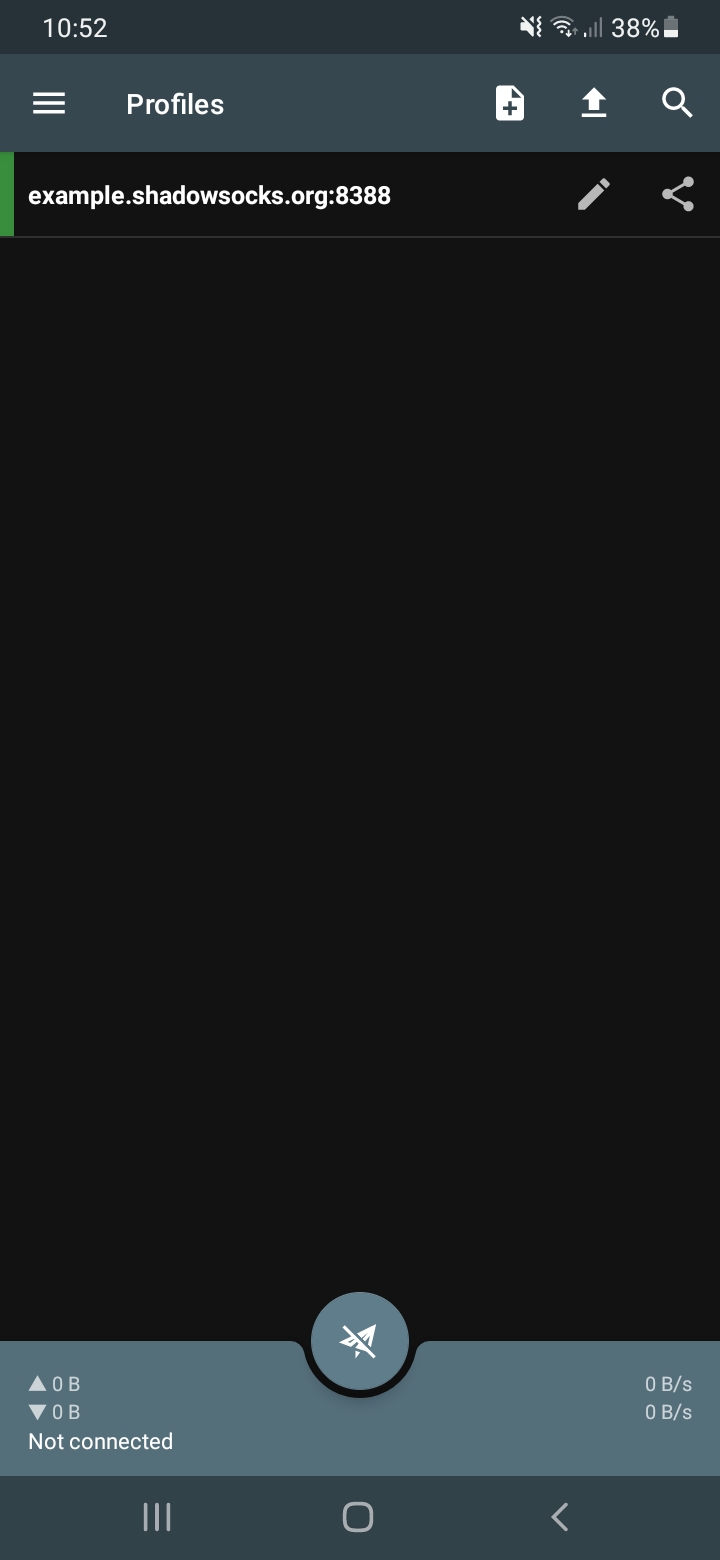
- This will open the configuration page where you can add and manage profiles for different proxy servers.
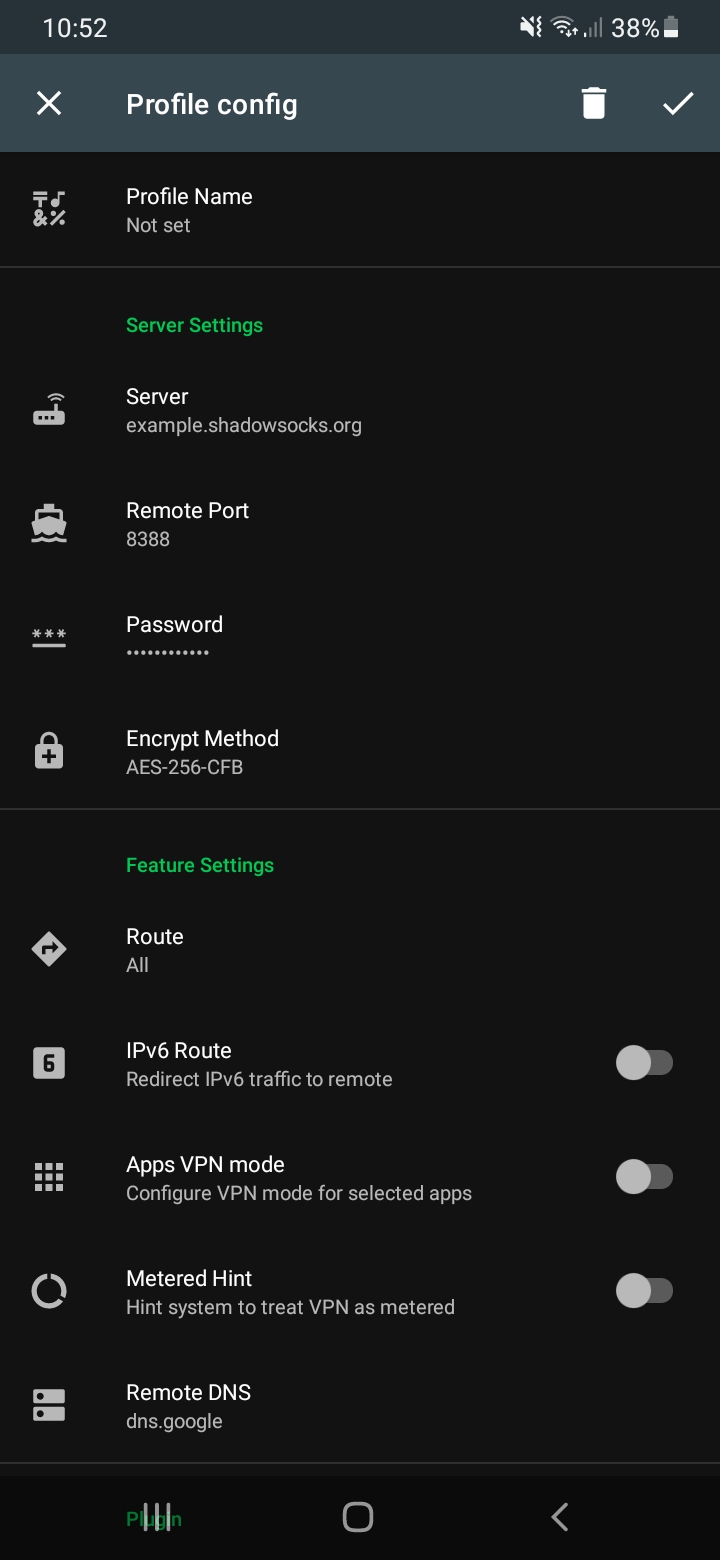
Create and configure a new proxy profile
Next, assign a name to your proxy profile and input the required server details.
- Under Profile Name, enter a descriptive name for the proxy server, such as the location or service name (e.g., “Home Proxy”).
- In the Server field, input the IP address of the proxy server.
- In the Remote Port field, enter the corresponding SOCKS5 port number.
- Enter the Password associated with the server to authenticate your connection.
- In the Encrypt method field, choose the appropriate encryption type (commonly AES-256-GCM or another secure option) from the dropdown menu.
You can find your proxy server details (IP address, port and password) in your Webshare account after signing up for their free proxies.

Once all the details are filled in, you’re ready to save the profile.
Finalize the configuration
To finalize the proxy configuration:
- After entering all the server details and selecting the encryption method, tap the checkmark icon located in the upper-right corner of the screen.
- This will save your profile, making it available for use in Shadowsocks.
The newly created profile will now appear on the app’s main page.

Enable the proxy
Now that the profile is configured, you can activate the proxy connection.
- On the main screen of the app, locate the gray button below your newly created profile.
- Tap this button to initiate the connection.
- If the setup is correct, the button will turn green, indicating that the proxy is now active. Additionally, a VPN icon will appear in the top status bar of your Android device, confirming that the connection is established.
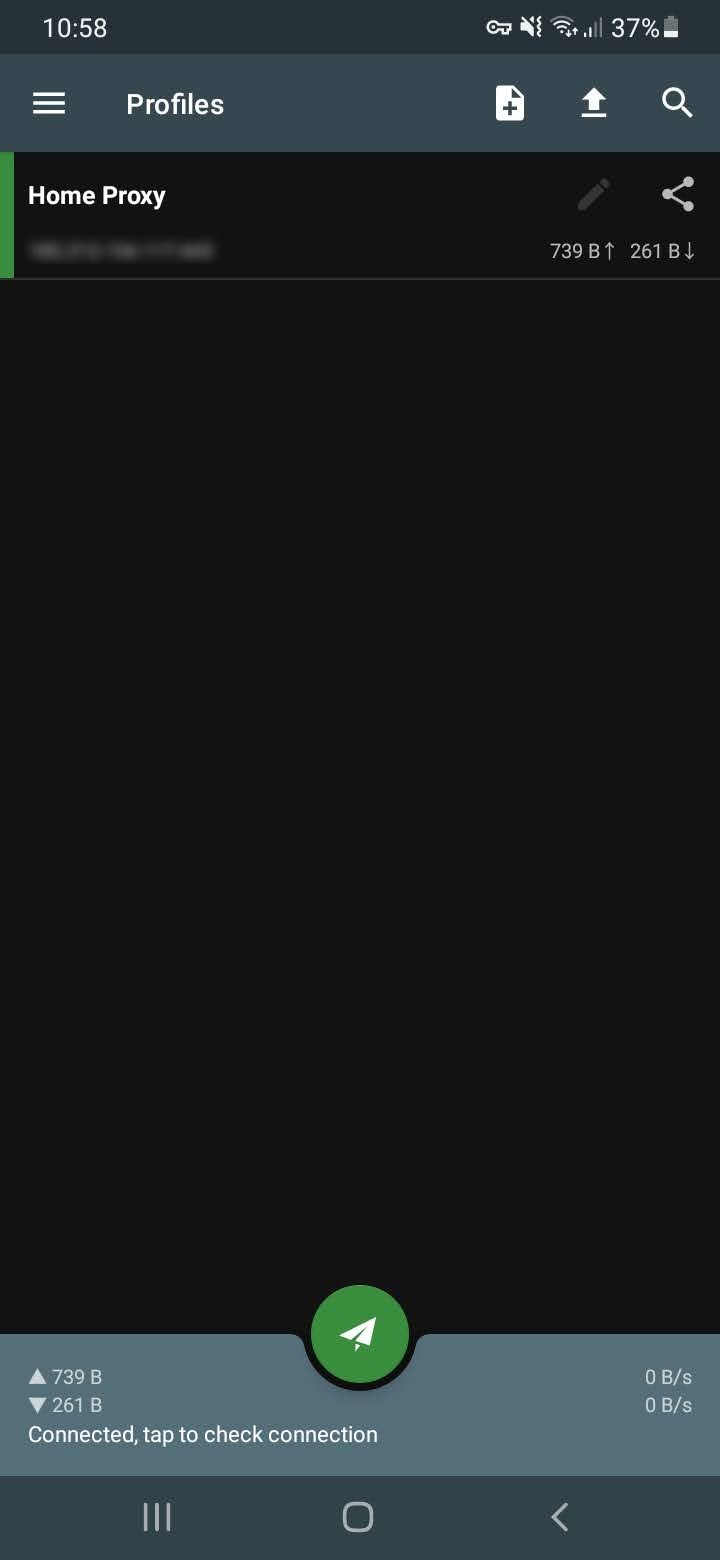
Turn off the proxy
When you no longer need the proxy connection, you can easily disconnect it.
- To turn off the proxy, tap the green button on the main page of the Shadowsocks app.
- This will pause the connection, and the button will revert to gray.
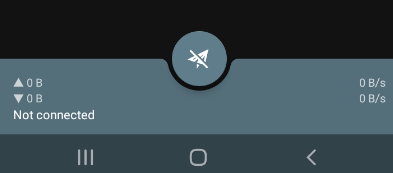
By toggling the connection on or off, you can control when your internet traffic is routed through the Shadowsocks proxy.
How to set up a proxy in Shadowsocks on Windows
Follow the steps below to configure a proxy in Shadowsocks on Windows:
Download the Latest Release of Shadowsocks for Windows
To get started, you’ll need to download the latest version of the Shadowsocks app for Windows.
- Go to the Shadowsocks GitHub release page.
- Look for the latest release version and download the .zip file for Shadowsocks-Windows.
- After the download is complete, extract the contents of the .zip file to a folder on your computer.

This will unpack the Shadowsocks app and make it ready for use.
Launch the Shadowsocks App
Once you have extracted the contents of the folder:
- Open the folder where you extracted Shadowsocks.
- Locate and double-click the Shadowsocks.exe file to launch the app.
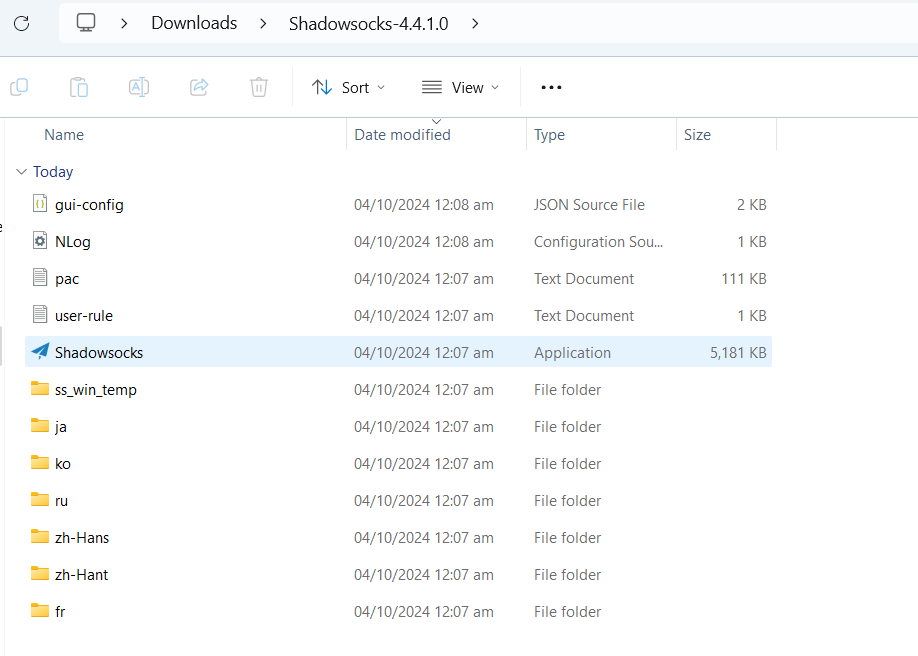
When you run the application for the first time, it will open in the system tray (in the lower-right corner of your taskbar). You can access the app by clicking its icon in the tray.
Enter the Proxy Server Details
Now that Shadowsocks is running, it’s time to configure it with your proxy server details.
- Right-click the Shadowsocks icon in the system tray and select Edit Servers.
- A form will appear where you can input your server details:
- Click Apply and then OK to save your settings.
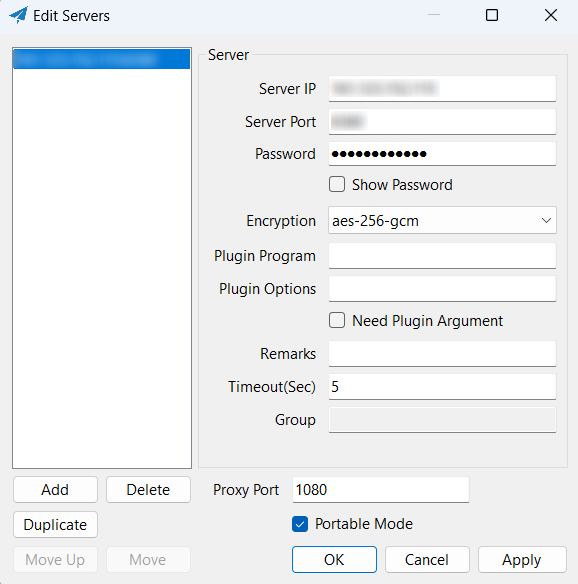
Enable Shadowsocks in System Proxy Mode
To start using the Shadowsocks proxy, you need to enable it in the Windows system settings.
- Go to the Windows taskbar and locate the Shadowsocks icon in the tray icons.
- Right-click on the Shadowsocks icon and navigate to System Proxy.
- Select Global mode.
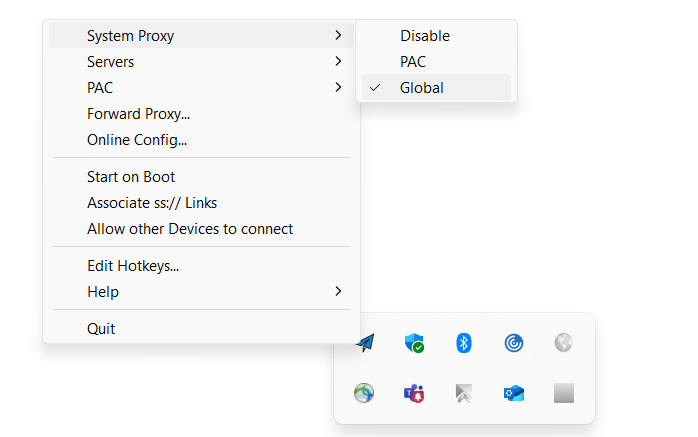
This setting ensures that all your internet traffic is routed through the Shadowsocks proxy, effectively changing your IP address and encrypting your data.
Disconnect the Proxy (Optional)
If you need to turn off the Shadowsocks proxy:
- Right-click the Shadowsocks icon in the system tray.
- Navigate to System Proxy and set it to Disable.
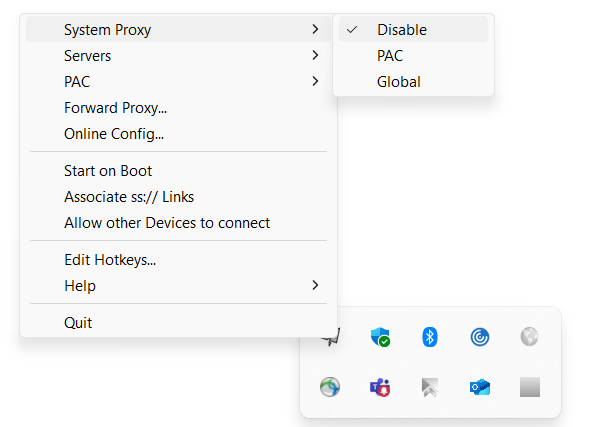
This will disable the proxy, and your internet traffic will no longer be routed through Shadowsocks.
Wrapping up: Setting up proxy in Shadowsocks
In this article, we covered how to set up a proxy in Shadowsocks on both Android and Windows. Whether you're looking to secure your browsing on a mobile device or a desktop, Shadowsocks provides a flexible and reliable solution. By following these simple steps, you can ensure your internet traffic is encrypted and your IP address is masked, offering greater privacy and access to restricted content.







